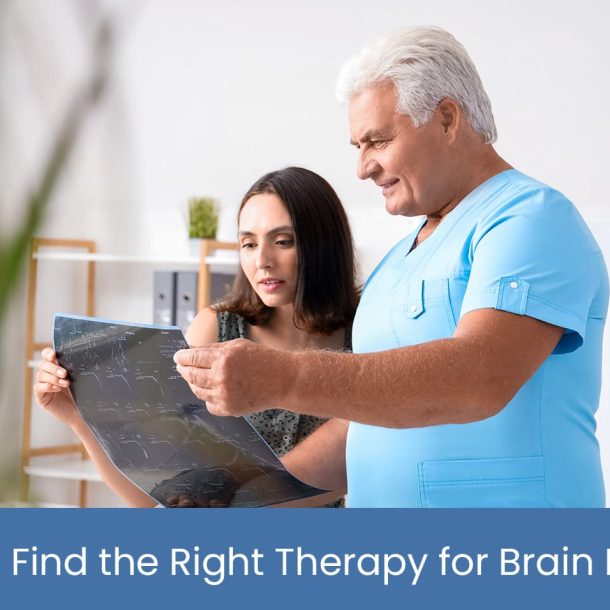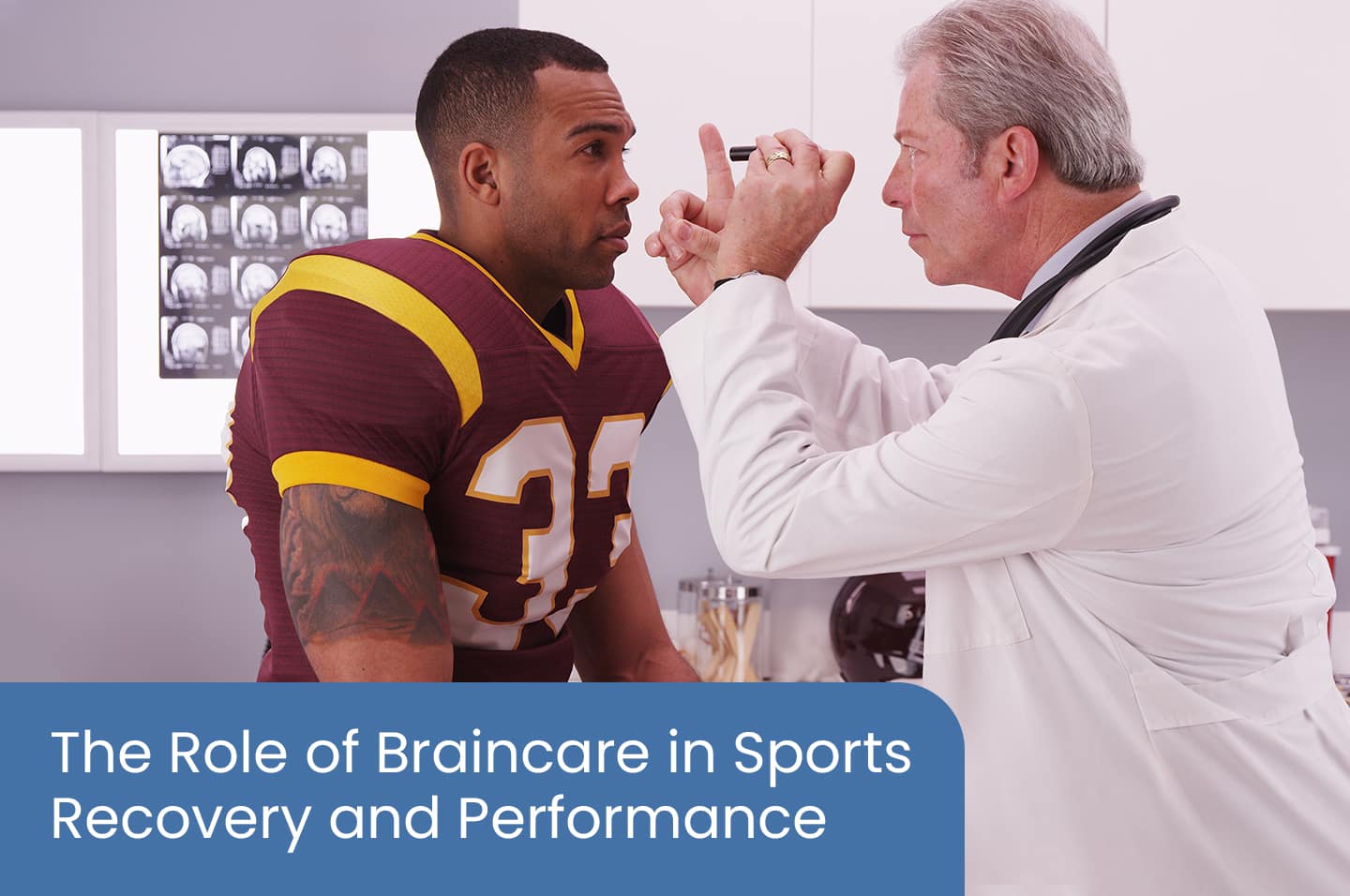
The Role of Braincare in Sports Recovery and Performance
- Home /
- The Role of Braincare in Sports Recovery and Performance

Athletes are praised for power, coordination, and endurance. What often goes unseen is the way the brain shapes every movement. Reaction time, focus, and the ability to filter distractions are the hidden skills that separate the good from the great. In the moments before a serve is returned, or a pitch is thrown, the brain has already done its work. However, athletic performance is never just about muscle memory.
Where Performance Really Starts
Every successful action begins in the brain. A player steadies their gaze, recognizes patterns, and calculates distance in a fraction of a second. Neuroplasticity describes the ability that the brain has to adapt to changes in a person’s environment. This is partially why brain training can matter just as much as physical drills. Your brain does reward you for practice, focus, and steady repetition. Over time, decision-making sharpens, awareness broadens, and confidence grows.
The value isn’t limited to the playing years. A brain that is kept strong during adolescence and early adulthood supports mental health later in life. The same pathways that help an athlete anticipate an opponent’s move also help prevent age-related decline, reduce risks linked to dementia, and protect mood and motivation.
Recovery Is More Than Physical
Injury changes the body, yet it also alters how the brain functions. After a torn ligament or a head injury, it’s the brain that must adapt. Pathways are reconfigured and functions are rerouted. Rather than relying on automatic motor sequences, new circuits form to compensate for what has been lost. These adjustments don’t happen instantly, yet they have been observed consistently.
Every brain heals at a different pace and over a different time span. There’s always the chance of full recovery, though the road rarely feels linear. Progress needs to be tracked and guided, since healing can occur unevenly. Passive strategies often delay recovery, while active braincare can move it forward.
Understanding Brain Mapping
Brain mapping helps explain where gaps remain after an injury. Quantitative electroencephalography (qEEG) reveals irregular rhythms in brain activity. Based on this information, plans are created to address memory loss, decision-making struggles, or reduced focus.
Through cognitive exercises guided by this data, clarity can be regained. Memory strengthens and strategic thinking returns. Athletes report that reaction times improve once neural circuits are activated in a structured way. Rehabilitation that respects the uniqueness of each brain avoids wasted effort and leads to more dependable results.
Concussions and Their Risks
Concussions, often considered mild, can still bring lingering complications that affect both daily routines and competitions. Headaches may last, irritability may surface, and mood can shift in ways that surprise people. Post-concussion syndrome sometimes develops, with sleep disturbances, attention problems, and fatigue stretching into months.
Objective measures of brain activity are vital in these moments. Data gets collected, analyzed, and interpreted before decisions are made about returning to play. Without that evidence, re-injury is far more likely. Athletic performance cannot be stabilized until brain health has been reestablished. When recovery is rushed, the risks multiply, and the quality of life declines along with performance.
MeRT as a Targeted Approach
Magnetic e-Resonance Therapy, or MeRT, provides a method for tailoring treatment. Using transcranial magnetic stimulation (TMS) combined with individualized brain mapping, patterns of dysfunction are identified. Stimulation is then delivered where it’s needed most.
The therapy has been used successfully in those recovering from traumatic brain injuries. It assists with reorganizing communication between brain regions, often leading to gains in reaction speed, concentration, and mood stability. After the rehabilitative phase, athletes often notice that their performance begins to improve again.
Conditions Supported by MeRT
FDA clearance exists for depression and OCD (obsessive-compulsive disorder). Beyond that, MeRT has been applied off-label for anxiety, PTSD, autism, dementia, and recovery following stroke. Progress has also been seen in developmental disorders. Even though outcomes vary, meaningful benefits have been recorded across a wide spectrum of conditions.
Adoption of this approach has grown steadily. Professional athletes, executives, students, and people managing long-term injury have all turned to this treatment. For some, this focus is on recovery; for others, the goal is optimization. The concept of brain optimization recognizes that therapy can fine-tune already healthy functions, not only repair damage.
What People Notice After MeRT
Those who complete MeRT commonly report the following:
- Better quality sleep
- Improved mood and emotional balance
- Greater concentration and reduced distraction
- More energy across the day
- Faster decision-making under pressure
- Fewer cravings and steadier motivation
- A clearer sense of confidence
- Elevated athletic performance
Improvements don’t appear in the same way for everyone. Some notice changes within weeks, while others take longer. What’s often observed is a gradual lifting of fog and a restoration of clarity. Confidence, once shaken, is rebuilt gradually. Projects that once felt overwhelming are completed more easily.
Why Braincare Belongs in Sports Recovery
Performance is often measured in tangible ways, such as speed, strength, or stamina. What happens in the brain, however, sets the stage for all of those. Perception, timing, and coordination originate from neural systems. If those systems are unstable, physical training alone can’t solve the problem.
Sports recovery, therefore, requires braincare. Sleep routines, targeted therapy, and cognitive exercises together create resilience. This is partially why MeRT is gaining attention not just from clinicians, but also from athletic trainers and performance coaches. It has value in recovery, prevention, and long-term optimization.
The Future of Brain Health
When structure is matched with adaptability, resilience grows. If practice is maintained and if rest is balanced with effort, the brain continues to adapt. Every brain heals at a different pace and over a different time span, yet neuroplasticity ensures that adaptation remains possible. Your brain does reward you for persistence, even when progress feels slow.
Recovery, prevention, and performance optimization are three separate aims, yet all belong to the same story. Stronger cognitive health supports athletic achievement and personal well-being alike. From school sports to professional competition, braincare is the foundation for what’s possible.
What Comes Next
If you have been navigating brain fog, poor sleep, prolonged recovery, or any cognitive challenge that has slowed you down, a new approach might be worth exploring. MeRT therapy has been used for sports recovery by athletes, teachers, veterans, and students. It’s not only about fixing what’s wrong; it’s about improving what is already working.
Support doesn’t have to start during a crisis. You can take the first step before things worsen. Call Neurosync Brain Treatment Centre at 365-799-8438, email us at neurosyncbtc@outlook.com, or submit a request through our online form. Your brain is ready when you are. Let’s build something better together.
Working Hours
Email: neurosyncbtc@outlook.com
Woodbridge. ON. L4L 1A6
